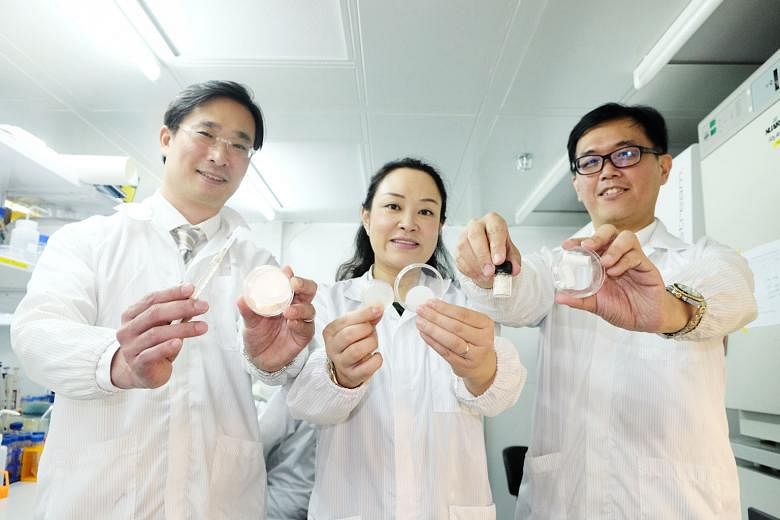Once or twice a week, a deliveryman drives to the School of Materials Science and Engineering at Nanyang Technological University (NTU), and unloads an airtight plastic cylinder containing bags of human fat tissue labelled "biohazard".
He takes it to the laboratory of Assistant Professor Cleo Choong, who puts the fat tissue through a battery of centrifuges, filters and pressurised gas chambers.
She and her associates are extracting a substance that may one day heal serious skin wounds without leaving a scar - helping surgery patients, diabetics with chronic lesions, burn victims and many others.
The donors are liposuction patients of plastic surgeon Marcus Wong who have consented to the use of their unwanted body fat for this game-changing collaboration between an aesthetic doctor and a materials scientist.
The secret ingredient in their recipe, which is found in abundance in fat tissue and the placentas of pregnant women, is a protein called ANGPTL4.
Fellow project leader Andrew Tan, whose team at NTU's School of Biological Sciences has been studying ANGPTL4 for much of the past decade, said the protein reduces the effect of scleraxis, a gene that causes collagen fibres in healing wounds to line up parallel to one another and become more visible.
When the protein is present, the collagen forms a mesh of fibres that not only makes the scar less visible but also gives it strength in multiple directions.
Referring to the protein, , Associate Professor Tan said: "We found a 'tuning knob' that controls the amount of collagen produced, instead of turning it off completely."
ANGPTL4 brings other benefits as well - it stimulates cell movement to close a wound and promotes blood vessel formation.
It can be mixed into materials for easy application, such as sheets of gel for wound healing.
The researchers, who have so far tried their concoctions on lab mice, found that normal wounds healed about twice as fast with ANGPTL4, while diabetic wounds healed about three times faster with the protein, even though diabetic wounds are notorious for their refusal to heal.
Furthermore, wounds dressed with ANGPTL4 develop scars that are less visible, yet stronger.
Dr Lee Chung Horn, an independent diabetes specialist at Gleneagles Medical Centre, said the development is interesting but much more work needs to be done, as the research has only been conducted on animals in the lab.
He added that although visibility of scars is not a big worry for diabetes patients, wounds that heal slowly or break open are.
The researchers, who published their findings in the journal Scientific Reports recently, are now trying to refine the product and make it in larger amounts.
They estimate it will take five years to reach commercial availability if funding and clinical trials go smoothly.
Prof Choong said: "It could mean that, in future, a surgeon can use the patient's fat and turn it into a healing agent on the spot, to promote faster recovery of the patient's wounds after an operation."
Companies have expressed interest in incorporating it into consumer products such as adhesive plasters, said Prof Tan.
According to global market research firm MarketsandMarkets, the global wound care market is expected to grow from last year's US$17.7 billion (S$24.1 billion) to about US$22 billion by 2022.
Dr Wong, who used to practise at Tan Tock Seng Hospital and now runs his own clinic at Gleneagles Medical Centre, is glad to help.
He said slow-healing wounds can have socio-economic impacts by reducing people's mobility or prolonging hospital stays.
"Wounds are not just a surface problem," he said.


